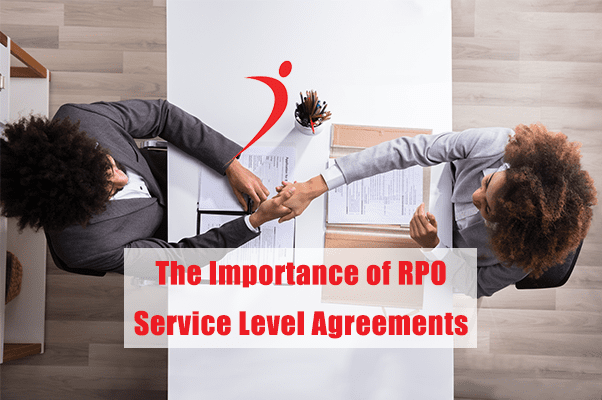
Choosing a Recruitment Process Outsourcing (RPO) firm to outsource your hiring needs is a great choice when you’re focused on maximizing financial and operational results. To maximize the benefits of using an RPO, it is important to have a well-formulated Service Level Agreement, or SLA, for those RPO services.
What is an SLA for RPO Services?
An SLA is an agreement between the customer and the RPO firm that specifies the expectations, objectives, needs, numbers, procedures, and quality of the candidates. This agreement is developed before the RPO begins working on the recruiting tasks and is the backbone of the partnership that is about to begin.
The Benefits of SLA's for RPO Services
The SLA guides the success of the partnership between the internal recruiter and RPO. It helps guide the RPO company to understand what types of candidates the customer is looking for, the process that will be used, and the key metrics for success. By having these specific details outlined, the RPO will be able to work more efficiently and achieve better results.
The SLA can also be used as an incentive for the RPO to meet the outlined goals. By determining a portion of the RPO’s compensation for meeting the goals, it will ensure the best results because the compensation is based on the final result, their performance.
Typical SLA's for RPO Services
The typical RPO SLA is made of seven sections:
- Objectives and Needs Assessment – Defines exactly what the customer is looking for and what the final result should achieve.
- Scope Statement - Summarizes what recruitment process and methods that will be used to source and screen the candidates.
- Pricing and Cost Estimate - Outlines how the pricing works and the cost per resume, cost per qualified submission, or cost per hire.
- Organization Chart – Establishes the roles and responsibilities of each contributing member on each side.
- Measurements and Metrics - Discuss how performance will be measured and monitored.
- Work Schedules and Communication – Describes the expected hours of operation and how the two parties will communicate.
- Response and Escalation – Creates a communication plan for issues
Resources:
Anapol, Stan. "Recruiting Process Outsourcing: Using a Well-defined SLA and KPI to Engage the Right Vendor and Set Correct Expectations.." HR Management n. pag. Web. 9 Nov 2010. <http://www.hrmreport.com/article/Recruiting-Process-Outsourcing--Using-a-well-defined-SLA-and-KPI-to-engage-the-right-vendor-and-set-correct-expectations/>.


